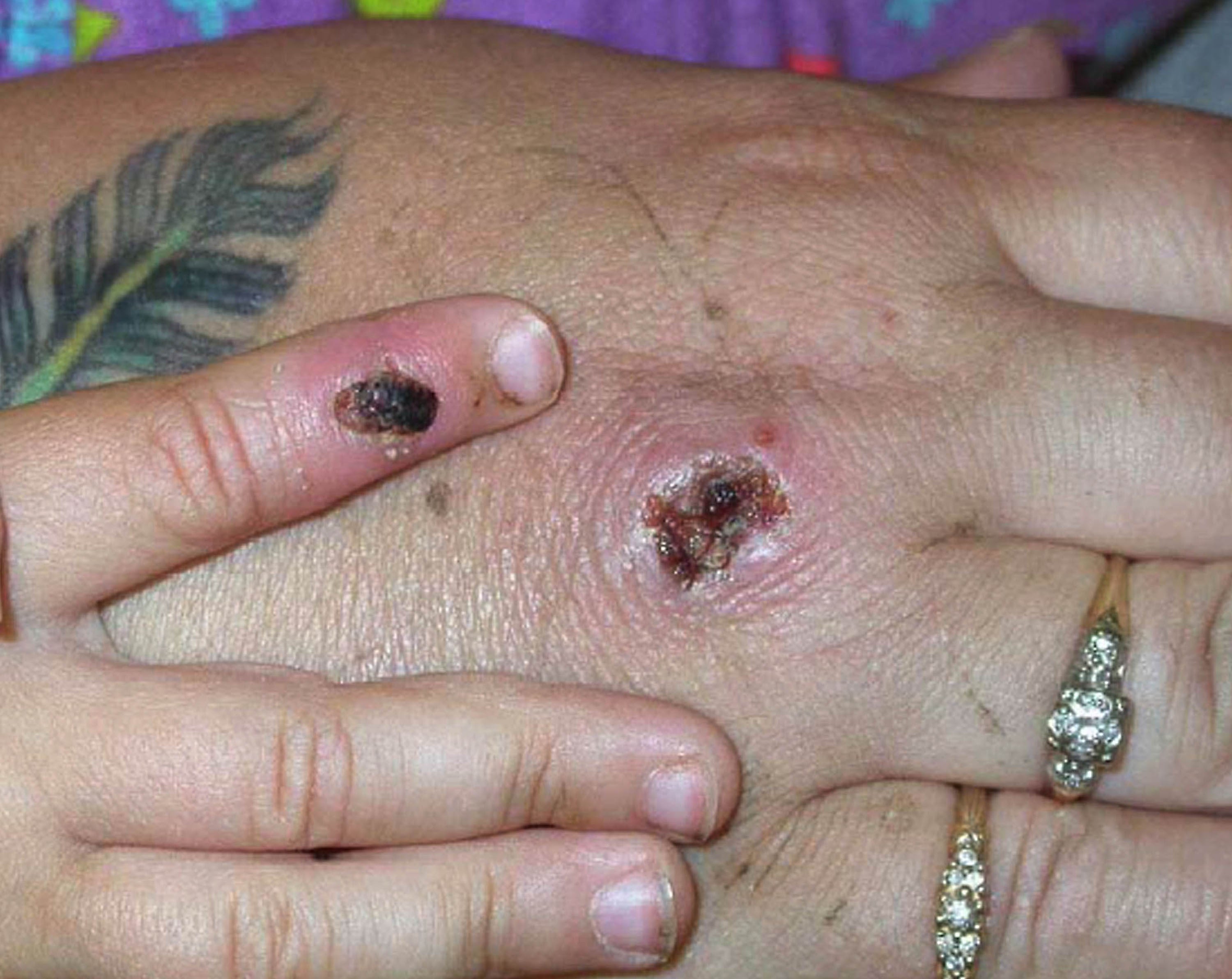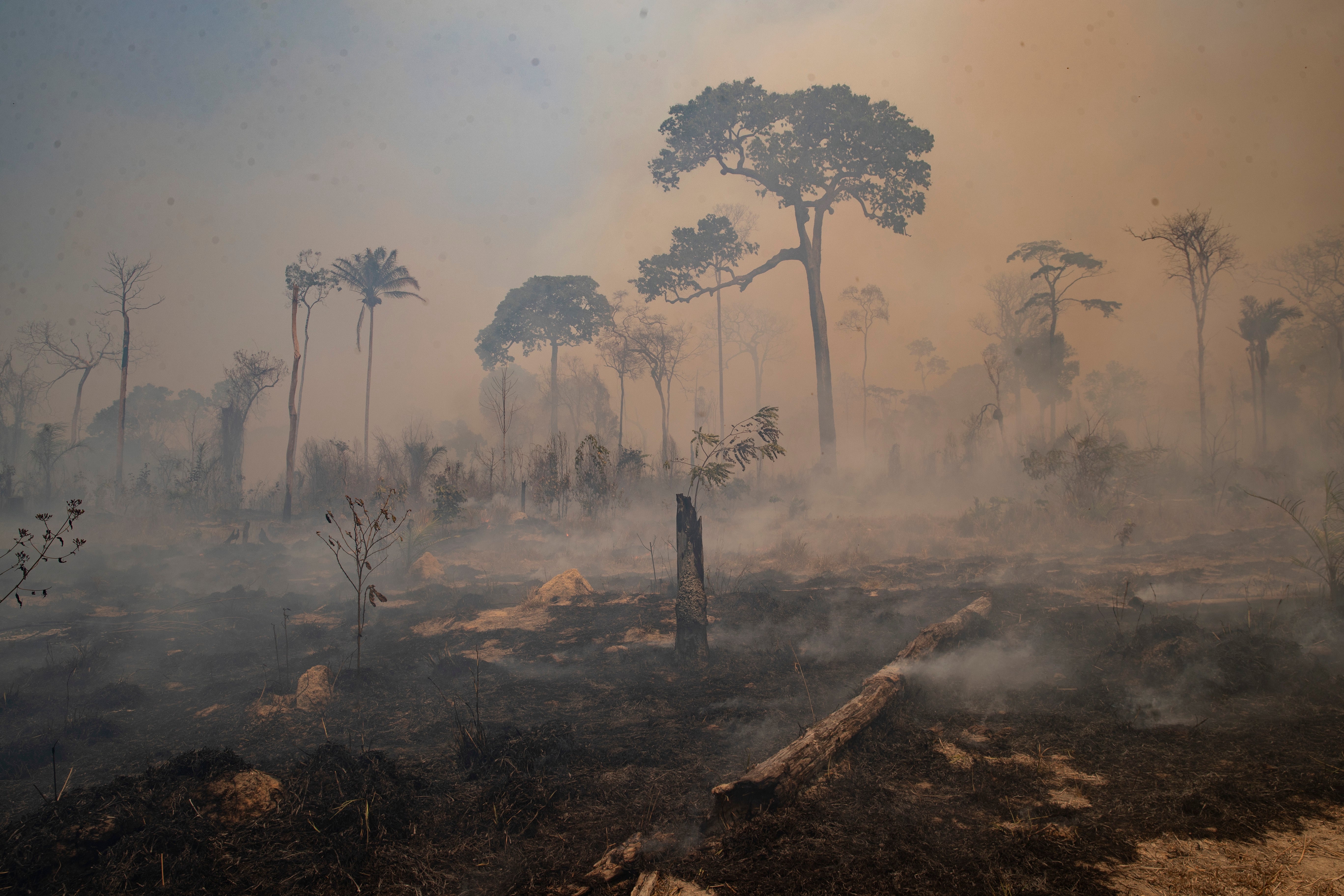Monkeypox: Why the climate and biodiversity crises mean we can expect more viruses like it
‘It’s having ramifications, sometimes predictable, sometimes not predictable,’ one scientist said of climate change
Human-caused climate change and the biodiversity crisis mean we can expect more diseases like monkeypox to emerge, scientists have warned.
On Saturday 23 July, the World Health Organisation declared that the rapidly-spreading disease is now a global emergency.
Monkeypox, a tropical disease spread by wild animals in Africa where it is endemic, unexpectedly proliferated across other parts of the world earlier this year, raising questions about the drivers behind such outbreaks and whether climate change is partly to blame.
Cases of the disease have now been recorded in more than 70 countries and it follows on the heels of the coronavirus pandemic and a bird flu outbreak earlier this year.
Scientists told The Independent that warming temperatures and changing land use due to humans extending their reach into natural habitats, and increasing their contact with animals carrying novel pathogens, means we can expect to see further virus outbreaks.
Michael Skinner, a reader in virology at Imperial College London, said there had been an outbreak of a new disease almost every year over the past 20 years, some of which could be attributed to climate change.
“It’s having ramifications, sometimes predictable, sometimes not predictable,” he said, referring to climate change.

The spread of some viruses, mainly those carried by biting insects such as mosquitoes, are affected by global heating as rising temperatures impact the areas in which their hosts can survive, Dr Skinner explained.
In the case of the recent bluetongue outbreak that affected sheep in Europe and the UK, gradual temperature increases meant the ticks that carried the virus slowly travelled north into the habitat of other ticks. That allowed the virus to jump to the more northerly ticks, resulting in the disease spreading further, he said.
But as some areas become more hospitable for disease-carrying insects, it’s possible others will become less so. That means disease will begin to affect different people across the planet, according to Kate Jones, a professor of ecology and biodiversity at University College London.
The evidence of how climate change will affect diseases that can be transmitted to humans from animals directly, instead of through biting insects, is less well-defined due to the variety of animal species that carry human diseases, she said.
“Climate change is unlikely to affect all diseases and areas consistently, and will also interact with other factors such as biodiversity changes to impact disease risk,” she said.
Climate change may not only affect exposure to emerging infections, but also humans’ resilience to the disease.
“In many regions, climate change is likely to impact food security, poverty, and other socioeconomic factors that affect individuals’ and societies’ vulnerability to disease outbreaks,” she added.
Population growth, changes in agriculture, the movement of people around the world, and climate change are the main drivers of disease emergence and spillover from animals to humans, according to Dr Skinner. And they are often interrelated, as the global temperature increase and population growth can affect agriculture and encourage migration, he said.
Rising temperatures and population change can impact land use, such as forcing farmers to move to higher ground to seek cooler temperatures or clearing away forests to make more space. This can in turn create a crossover between humans and animals leading to outbreaks, he said. Dr Skinner said an example of this was the Nipah virus that spread from bats and pigs to humans.

Dr Tilly Collins, deputy director of the Centre for Environmental Policy at Imperial College London, agreed that the world can expect more diseases to emerge as humans encroach on the world’s remaining wild lands and forests.
“This is intimately tied to the biodiversity crisis through our aggressive exploitation of the natural environment and these are both made worse by climate change,” she said, explaining that migration patterns and increasing human consumption, themselves made worse by global heating, help drive exploitation.
A third example where climate change can impact the spread of disease is if predators are depleted or even lost, according to Dr Skinner. This can lead to rodent populations booming, he said, which increases the likelihood of them passing on diseases to humans.
What about monkeypox specifically?
Not enough is yet known about where or how this outbreak of monkeypox started to gauge the extent to which climate change may be involved, the scientists said.
Dr Jones said she while there was some evidence that climate change has impacted monkeypox outbreaks through changing the distribution of the main virus host, land-use change has probably had more of an impact.
While there may be an explicit climate change component, possibly driven by changing temperatures, humidity and migration, they have not yet been tested, Dr Collins said.
The abrupt rise in monkeypox cases may be down to the fact that doctors and laboratories are now testing for the disease while a few weeks ago this may not have been considered, she added.
Aaron Bernstein, interim director of the Centre for Climate, Health, and the Global Environment at Harvard TH Chan School of Public Health, said all the pandemics of the past century have started as spillover diseases from animals to humans, except cholera.
In order to prevent such spillovers, Dr Bernstein said the world should conserve species habitats, especially forests, restrict wildlife trade, and improve livestock biosecurity. This will not only reduce the risk of pandemics but will help combat climate change and save species, he said.
Susan Lieberman, vice president of international policy at the Wildlife Conservation Society, agreed.
“We know that if forests are protected and conserved, and deforestation and forest degradation are prevented, we will benefit biodiversity, help mitigate climate change, and reduce the risk of pathogen spillover from wildlife to people,” she said.
Join our commenting forum
Join thought-provoking conversations, follow other Independent readers and see their replies
Comments


Bookmark popover
Removed from bookmarks